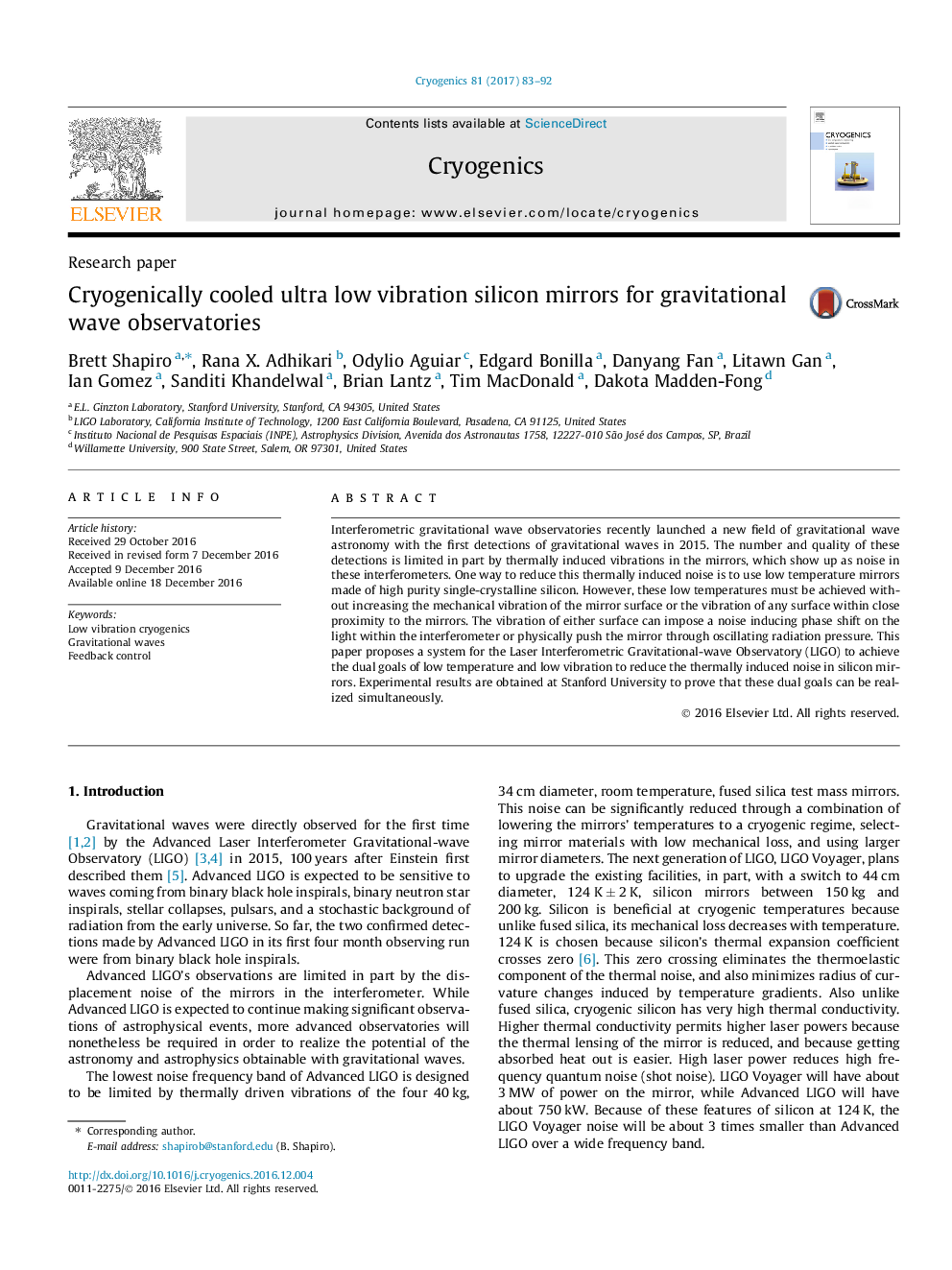| Article ID | Journal | Published Year | Pages | File Type |
|---|---|---|---|---|
| 5444170 | Cryogenics | 2017 | 10 Pages |
Abstract
Interferometric gravitational wave observatories recently launched a new field of gravitational wave astronomy with the first detections of gravitational waves in 2015. The number and quality of these detections is limited in part by thermally induced vibrations in the mirrors, which show up as noise in these interferometers. One way to reduce this thermally induced noise is to use low temperature mirrors made of high purity single-crystalline silicon. However, these low temperatures must be achieved without increasing the mechanical vibration of the mirror surface or the vibration of any surface within close proximity to the mirrors. The vibration of either surface can impose a noise inducing phase shift on the light within the interferometer or physically push the mirror through oscillating radiation pressure. This paper proposes a system for the Laser Interferometric Gravitational-wave Observatory (LIGO) to achieve the dual goals of low temperature and low vibration to reduce the thermally induced noise in silicon mirrors. Experimental results are obtained at Stanford University to prove that these dual goals can be realized simultaneously.
Keywords
Related Topics
Physical Sciences and Engineering
Materials Science
Electronic, Optical and Magnetic Materials
Authors
Brett Shapiro, Rana X. Adhikari, Odylio Aguiar, Edgard Bonilla, Danyang Fan, Litawn Gan, Ian Gomez, Sanditi Khandelwal, Brian Lantz, Tim MacDonald, Dakota Madden-Fong,
